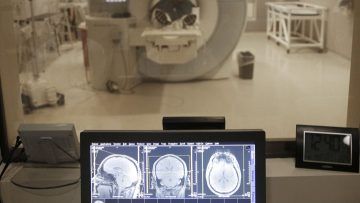Elizabeth Svoboda and Undark in The Atlantic:

As he neared his 50s, Anthony Andrews realized that living inside his own head felt different than it used to. The signs were subtle at first. “My wife started noticing that I wasn’t getting through things,” Andrews says. Every so often, he’d experience what he calls “cognitive voids,” where he’d get dizzy and blank out for a few seconds. Over time, Andrews’s issues became more pronounced. It wasn’t just that he would lose track of things, as if a thought bubble over his head had popped. A dense calm had descended on him like a weighted blanket. “I felt like I was walking through the swamp,” says Andrews, now 54. He had to play internet chess each morning to penetrate the mental murk.
With his wife, Mona, by his side, Andrews went to doctor after doctor, racking up psychiatric diagnoses. One told him he had ADHD. Another thought he was depressed, and another said he had bipolar disorder. But the drugs and therapies they prescribed didn’t seem to help. “After a month,” Andrews recalls of these treatments, “I knew it’s not for me.” After a few rounds of diagnostic hopscotch, Mona found David Merrill, a psychiatrist and brain researcher at the University of California at Los Angeles. Other doctors had diagnosed Andrews based mostly on his symptoms, but Merrill proposed a new approach: using computer software called Neuroreader to measure the volume of Andrews’s brain. The results were a shock: Based on small volume changes, along with Andrews’s history and cognitive tests, Merrill told Andrews that he likely had chronic traumatic encephalopathy (CTE), a neurodegenerative disorder caused by repeated head impacts. Andrews was stunned. CTE? Like Dave Duerson, Junior Seau, and all those other NFL guys? Sure, he’d played football as a kid, but he’d mostly stopped after high school.
